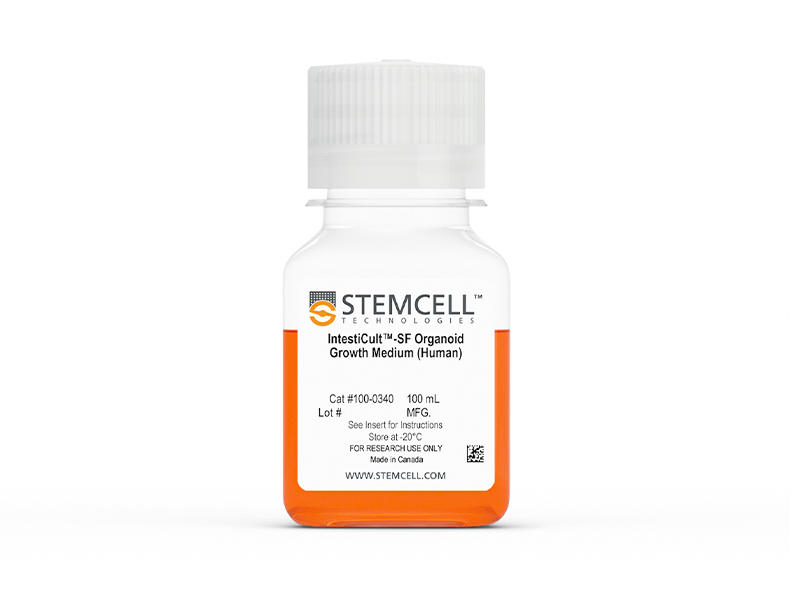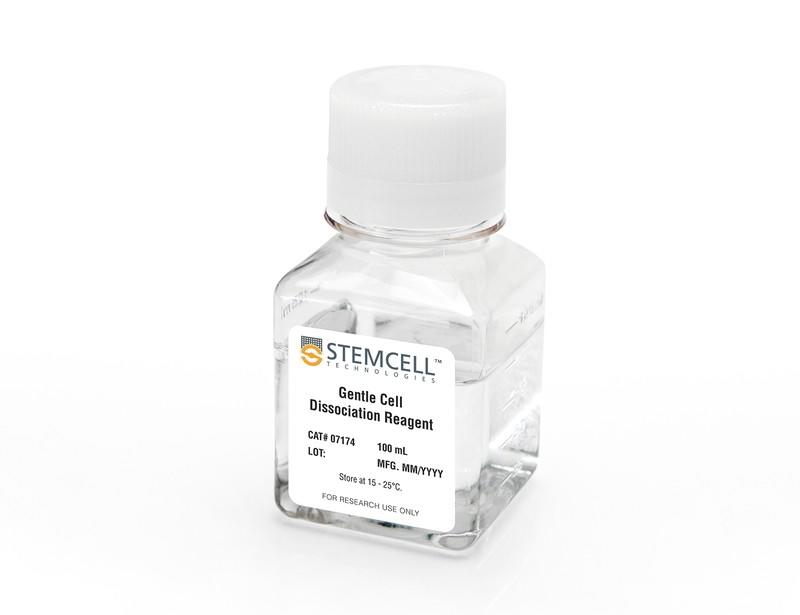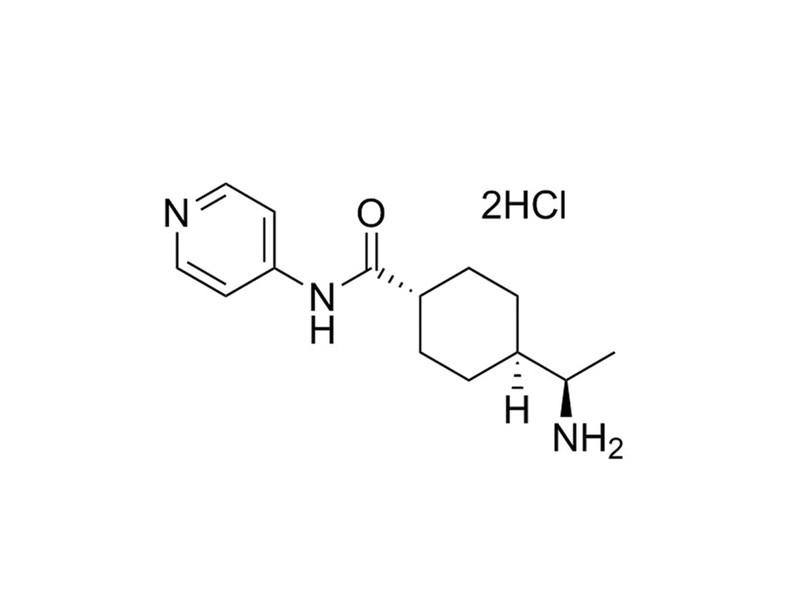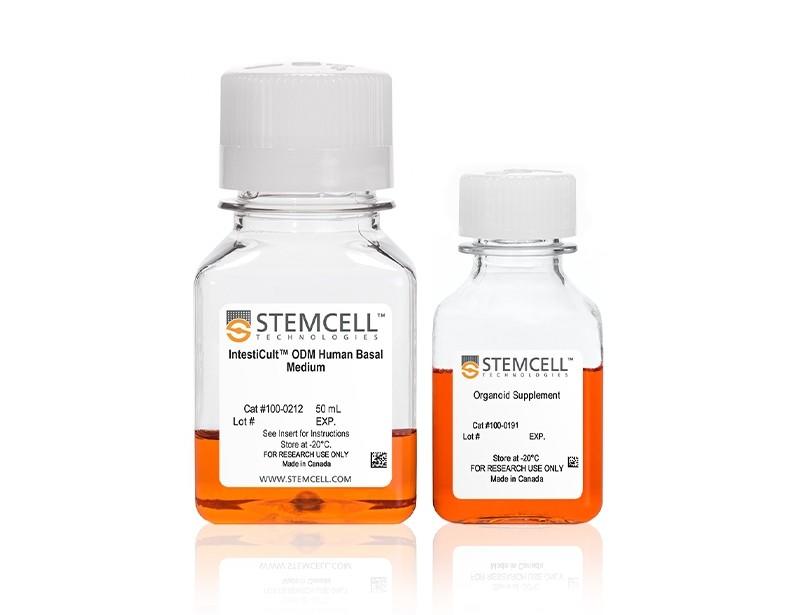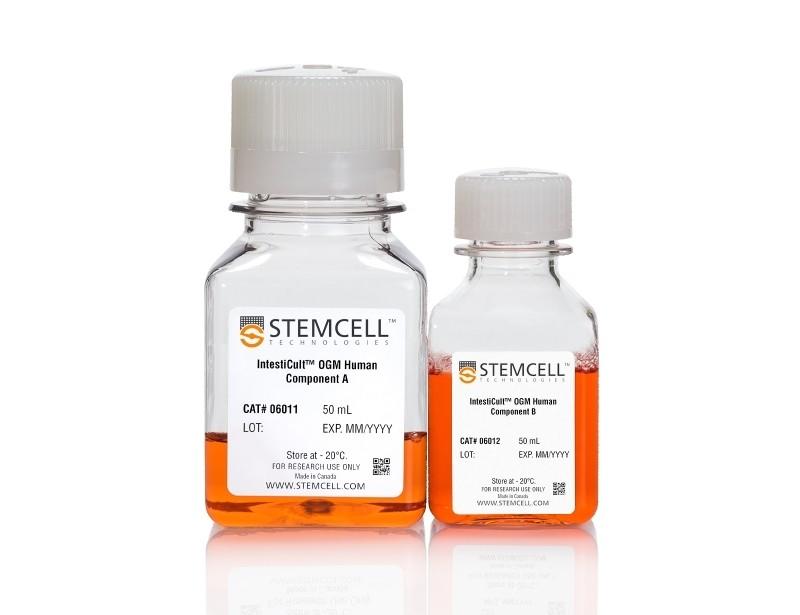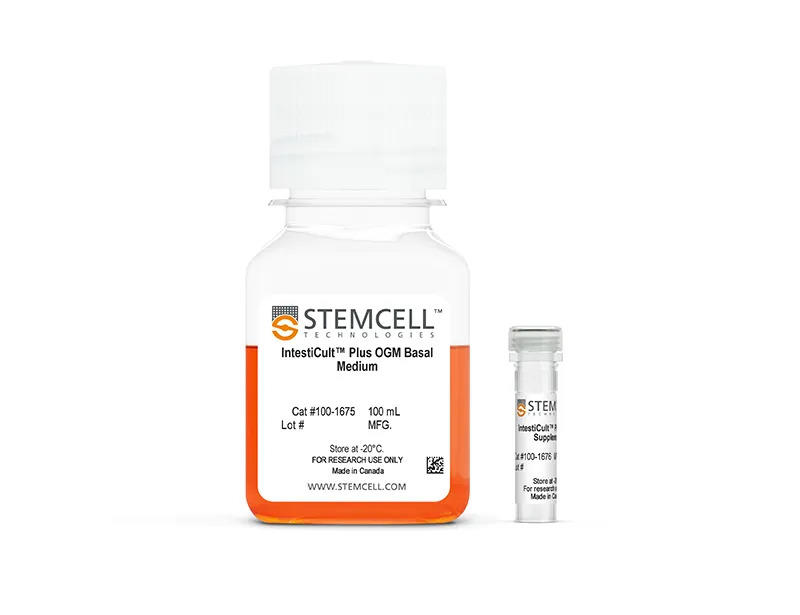STEMCELL Technologies IntestiCult IntestiCult-SF Organoid Growth Medium (Human)
- 研究用
IntestiCult™-SF Organoid Growth Medium (Human)(製品コード:ST-100-0340)は、ヒトの腸陰窩に由来する腸オルガノイドを効率よく樹立し長期に維持する完全培地です。IntestiCult™-SFの組成には、血清および培養上清が含まれていません。
腸管オルガノイドは、腸上皮研究に便利なin vitro器官型培養システムです。分離した腸陰窩を本品で培養すると、複雑なオルガノイドを迅速に形成します。オルガノイドは、成人腸上皮にある既知の細胞型を含む極性化した上皮細胞層で囲まれた、機能性内腔を有します。成熟すると生体内組織の腸陰窩に類似する突出した芽を形成します。本品は、患者生検からの腸上皮幹細胞の増殖と、新鮮組織またはすでに確立されている凍結ストックからのオルガノイドの拡大培養をサポートします。
腸オルガノイドの用途には、腸上皮発達と機能の研究、腸疾患モデル、標的分子スクリーニングなどがあります。また、成体幹細胞の特性や再生医療の研究にも使用できます。腸オルガノイドは、IntestiCult™ Organoid Differentiation Medium (Human)(ST-100-0214)を使用してさらに分化させることもできます。
本品はHUBとの共同開発製品です。商業目的で使用する場合は、HUB Organoids B.V. (www.huborganoids.nl/)へご連絡の上、商用ライセンスまたはHUBとのライセンスに関する説明を受けてください。
製品の特長
IntestiCult™-SF Organoid Growth Mediumで、ヒト腸オルガノイドを無血清条件下で樹立・維持
- 成人腸上皮の多くの重要な特徴(細胞内/間シグナル伝達、自己増殖幹細胞ニッチ、内腔内外への機能的輸送など)を再現する便利なin vitroシステム
- 血清および培養上清(conditioned medium)フリーの組成
- ゲノム編集プロトコルでの使用に適合
- 1週間で腸オルガノイドを作製
- 一貫した結果をもたらす完全培地
データ紹介
IntestiCult™ Organoid Growth Medium Human(OGMH)で培養したものと同等の腸オルガノイドを作製
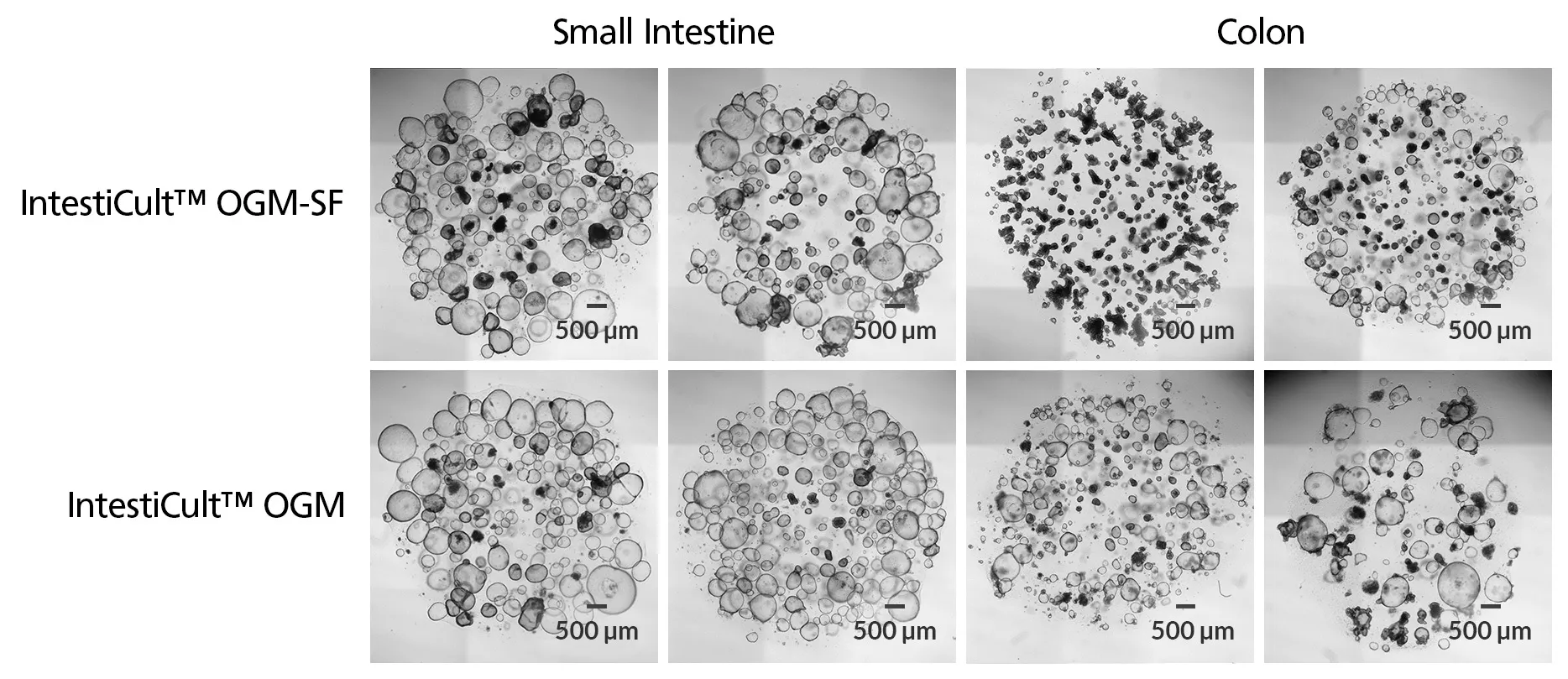
Figure 1. Organoids Grown in IntestiCult™-SF Have a Comparable Morphology to Organoids Grown in IntestiCult Organoid Growth Medium (Human)
Human intestinal organoids grown in IntestiCult™-SF and IntestiCult™ Organoid Growth Medium (Human) display similar morphological characteristics during organoid maintenance and expansion. Shown are organoids from small intestinal and colonic tissues, established and expanded in IntestiCult™-SF or IntestiCult™ OGMH. Organoids are imaged at passage 5 of culture for all images. Scale bars = 500 μm.
IntestiCult™ OGMHと比べて、腸オルガノイドをより効率的に増殖
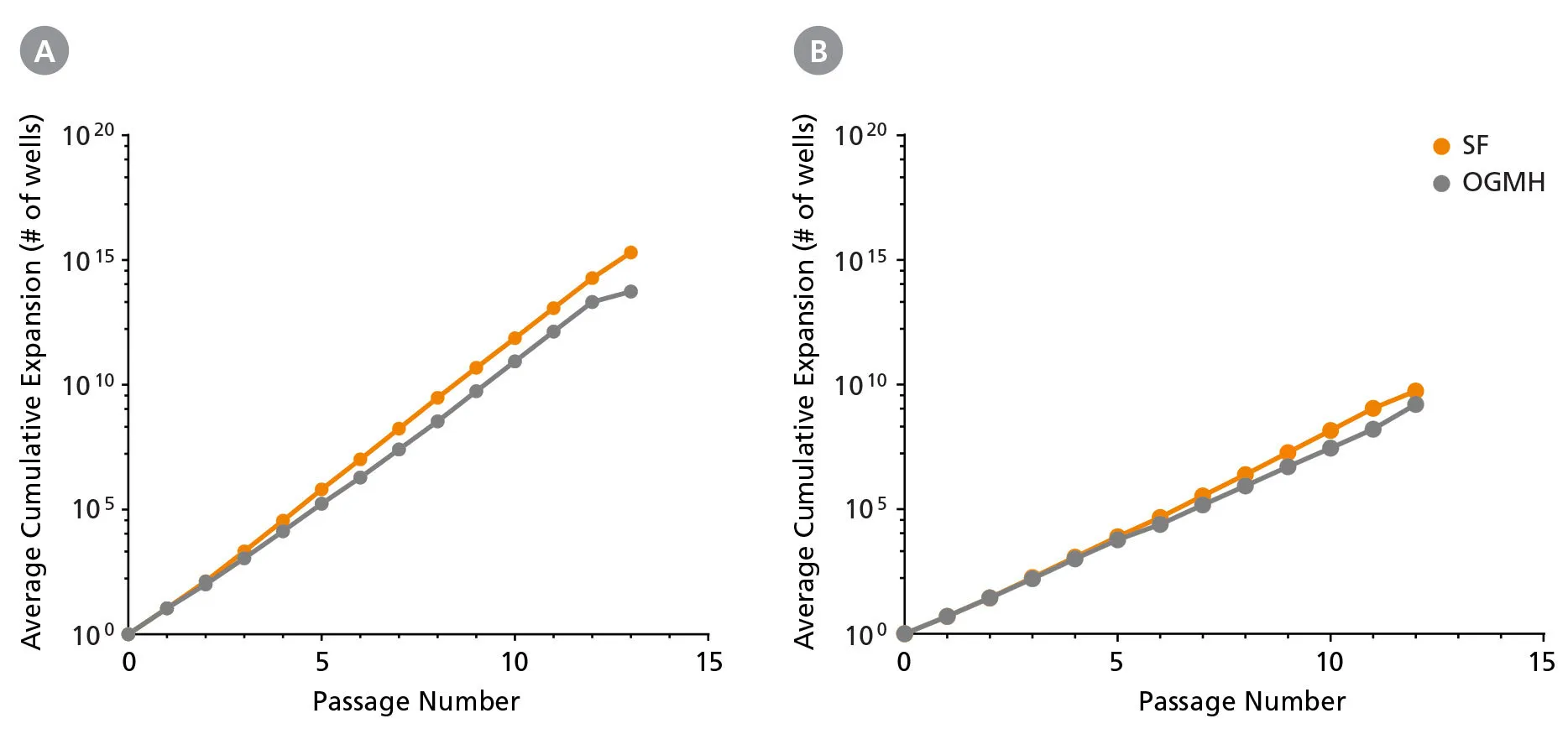
Figure 2. IntestiCult™-SF Provides More Efficient Expansion of Intestinal Organoids Compared to IntestiCult™ OGMH
Human intestinal organoids established from both (A) small intestinal and (B) colonic tissues display more efficient expansion during extended culture when grown in IntestiCult™-SF compared to those grown in IntestiCult™ OGMH. Shown is the cumulative expansion of organoids averaged across two separate donor lines in each medium. IntestiCult™-SF demonstrates more efficient expansion of both small intestinal and colonic organoids during extended culture.
成熟腸上皮のいくつかの特徴を示す腸オルガノイド
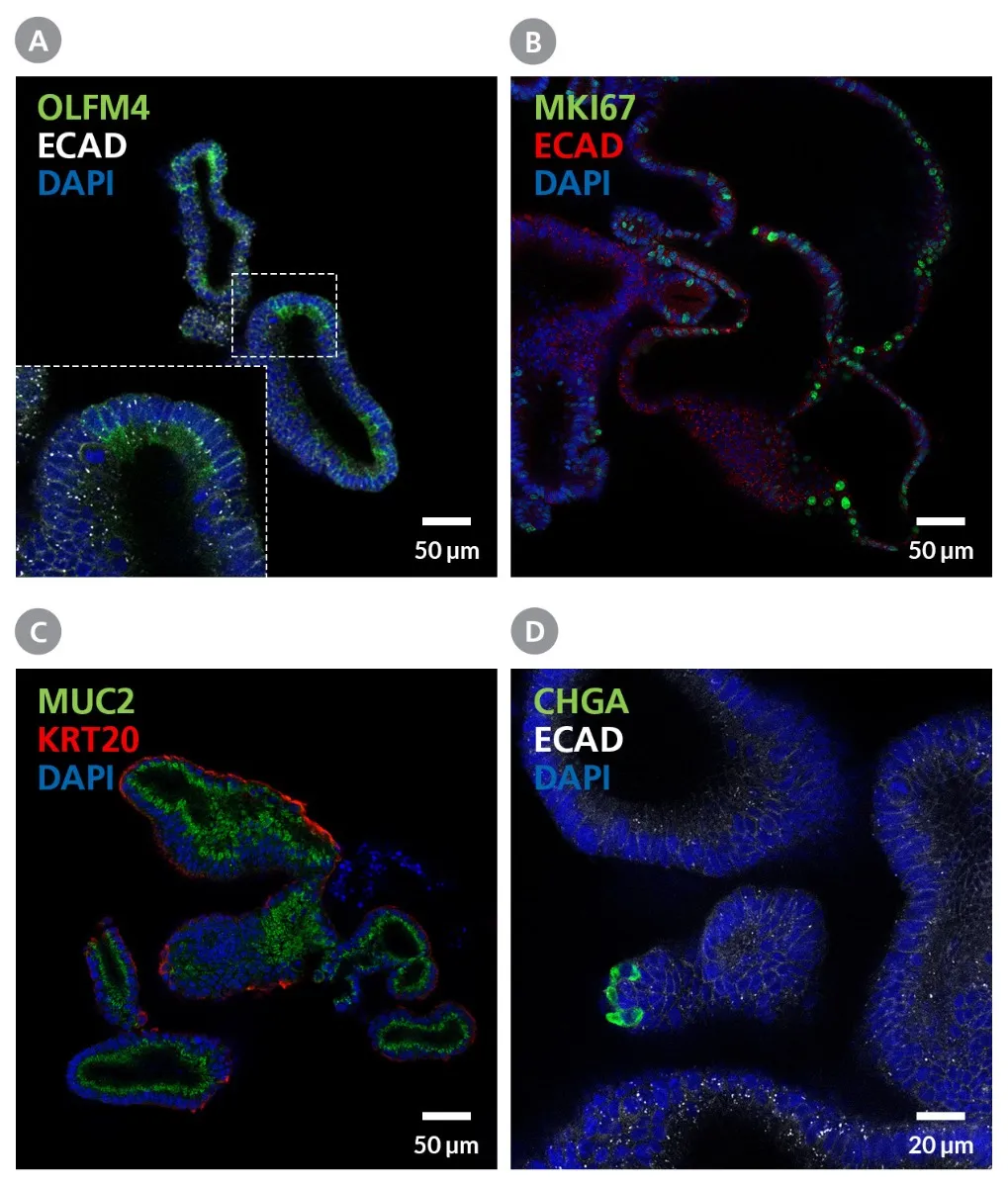
Figure 3. Organoids Grown in IntestiCult™-SF Display Some Characteristics of the Mature Intestinal Epithelium
While organoids grown in IntestiCult™-SF display a primarily "immature" phenotype including expression of (A) intestinal stem cell marker OLFM4 and (B) proliferation marker ki67. (C, D) These organoids also display some characteristics of the mature epithelium such as the presence of goblet cells (C, Muc2), enterocytes (C, KRT20), and enteroendocrine cells (D, CHGA). Scale bars = 50 μm or 20 μm as indicated.
IntestiCult™ OGMHで培養した腸オルガノイドと似た遺伝子発現
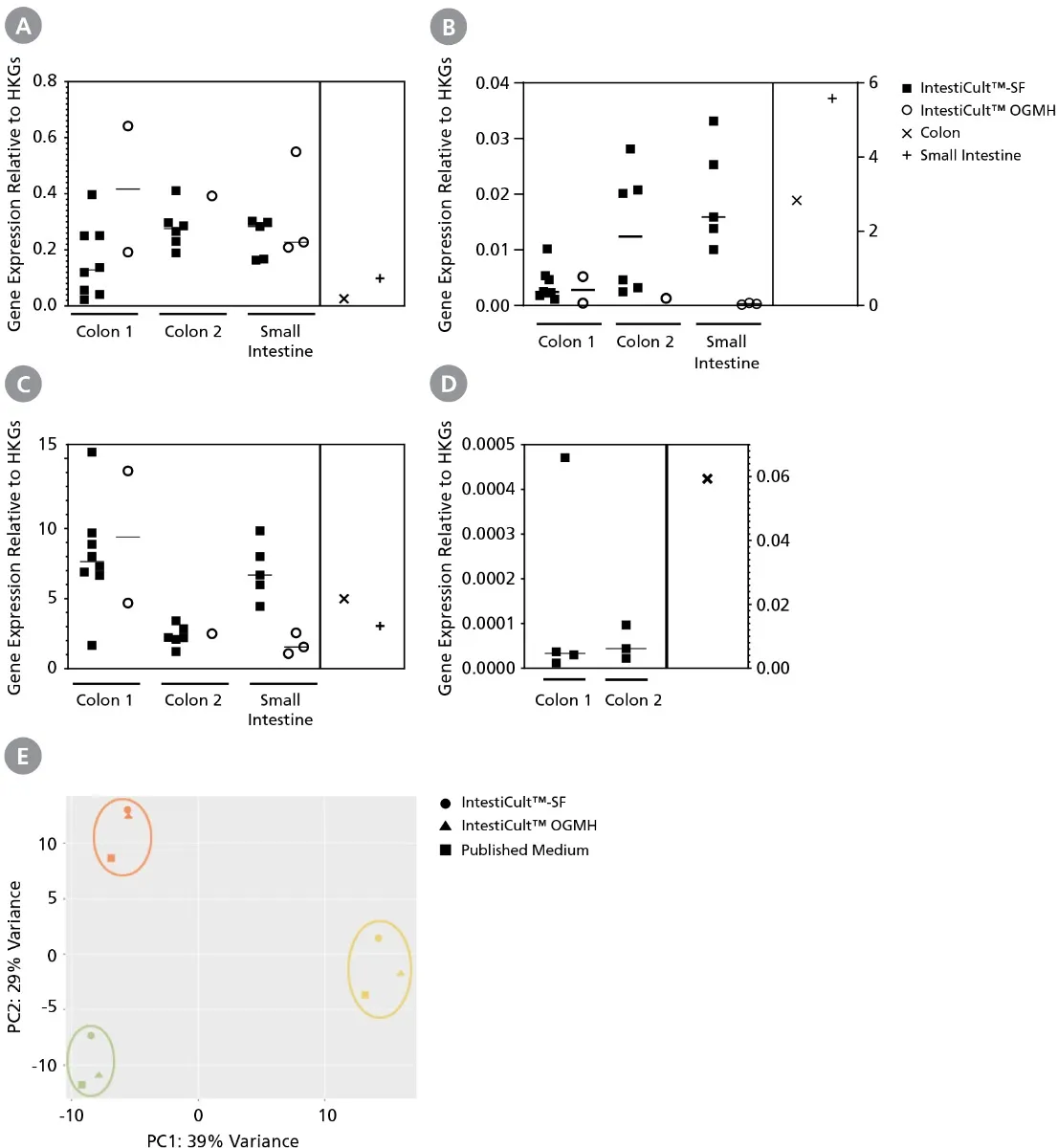
Figure 4. Organoids Grown in IntestiCult™-SF Display Similar Genetic Expression Profiles to Those Grown in IntestiCult™ OGMH
Analysis of intestinal organoids grown in IntestiCult™-SF by qPCR of (A) Lgr5, (B) Muc2, (C) Krt20, and (D) ChgA demonstrates similar genetic expression profiles to those grown in IntestiCult™ OGMH, as well as to colonic and small intestinal tissue (A-D; x and + respectively). All expression levels are shown relative to ACTB and TBP house-keeping genes (HKGs). (E) Further analysis of three separate donors grown in IntestiCult™-SF (circles) IntestiCult™ OGMH (triangles), and published medium (squares) by principle component analysis demonstrates that differences between cultures are primarily due to donor variability with samples forming distinct clusters separated by donor, rather than by medium.
ポリープ組織に由来する腸オルガノイドの効率的な増殖
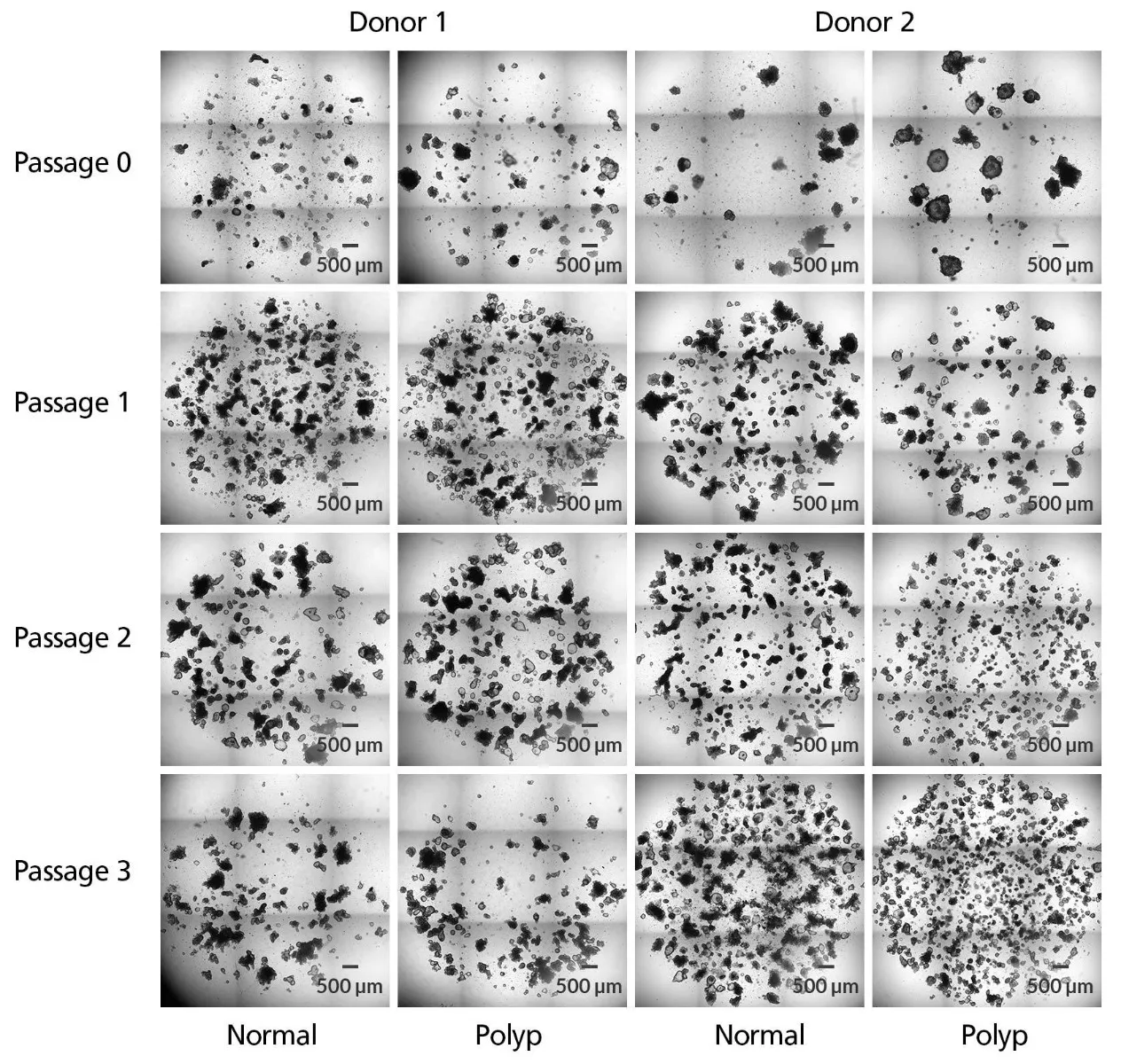
Figure 5. IntestiCult™-SF Enables Efficient Expansion of Intestinal Organoids from Polyp Tissue
Intestinal organoids were established from both normal epithelial tissue, as well as from polyp tissue, and expanded for three passages in IntestiCult™-SF. Shown are cultures from two separate donors, imaged at the end of each passage immediately before passaging.
IntestiCult™ Organoid Differentiation Medium(ODM)でさらに分化可能な腸オルガノイド
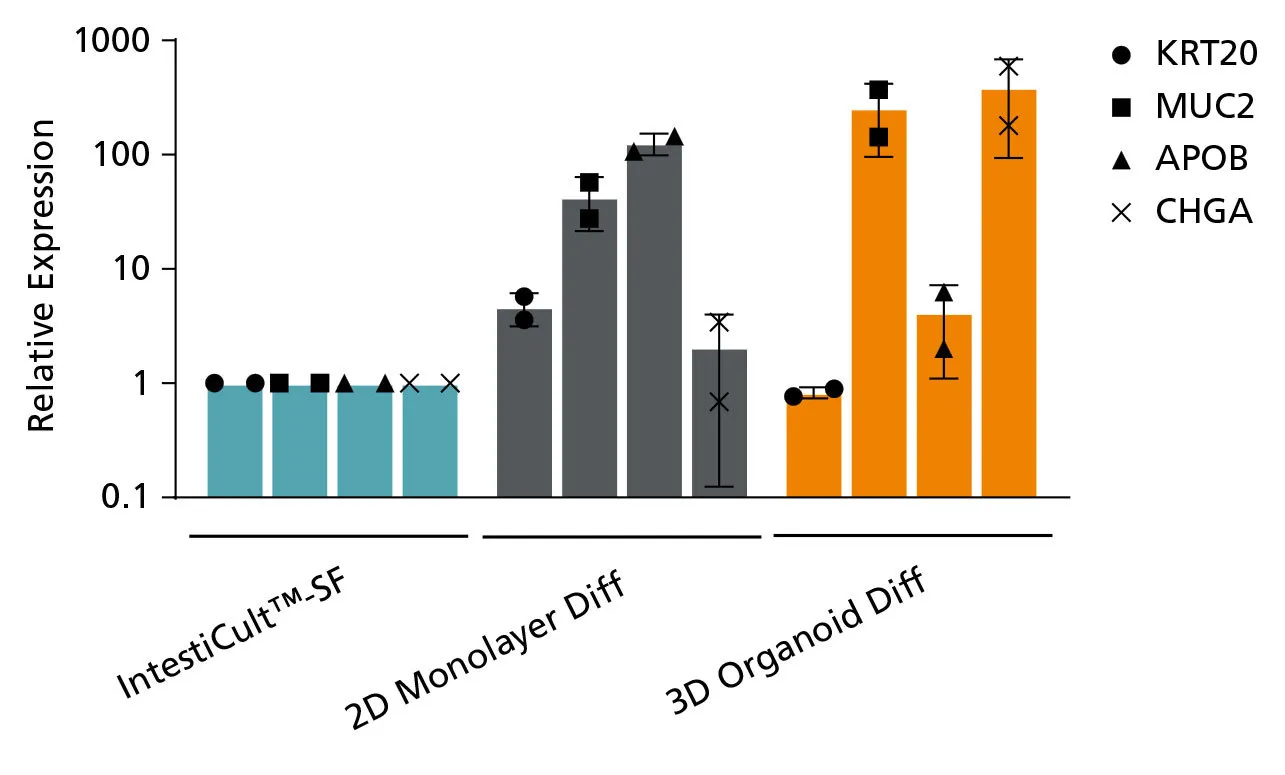
Figure 6. Organoids Grown in IntestiCult™-SF can be Further Differentiated using IntestiCult™ Organoid Differentiation Medium
Further differentiation of organoids in IntestiCult™-SF can be achieved by passaging organoid cultures in IntestiCult™ Organoid Differentiation Medium as organoid-derived monolayers (2D Monolayer Diff) or in 3D organoid culture (3D Organoid Diff). Upon differentiation, markers for enterocytes (KRT20, ApoB), goblet cells (Muc2), and enteroendocrine cells (ChgA) are upregulated compared to organoids grown in IntestiCult™-SF.

